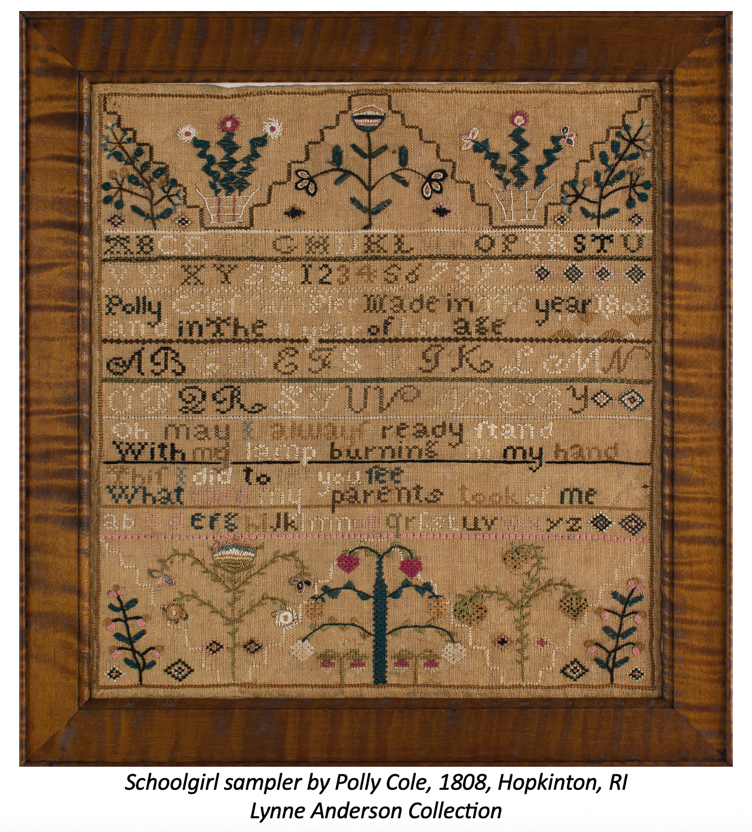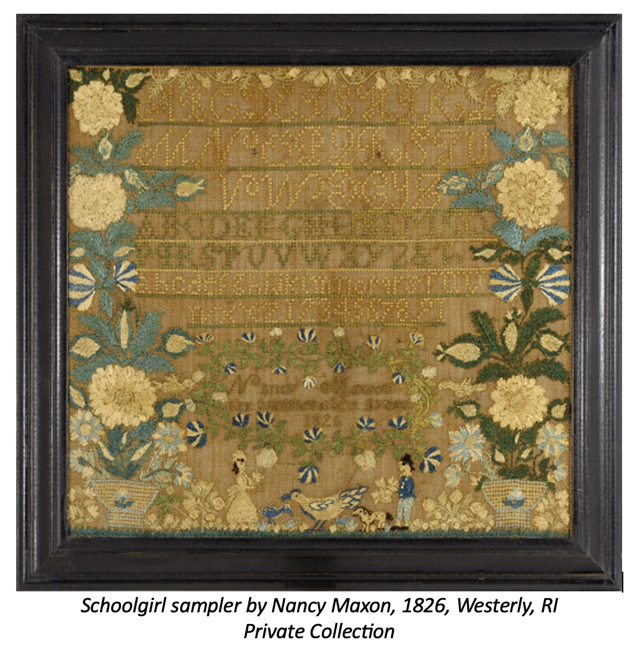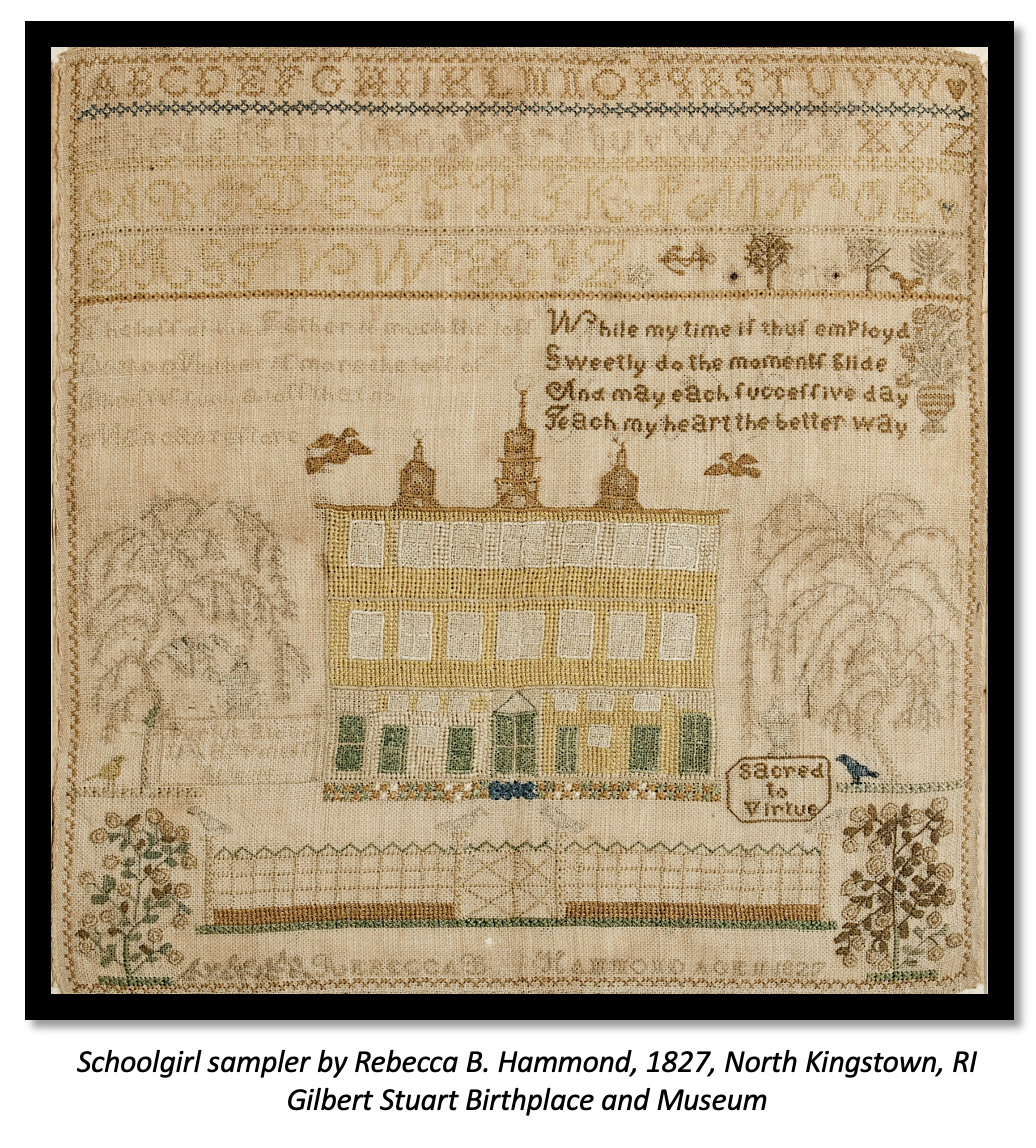Embroidered Lives:
South County Samplers and Their Stories
Curated by:
Margaret O'Connor
Executive Director Emerita of the Gilbert Stuart Birthplace and Museum
Lynne Anderson, Ph.D.
President of the Sampler Consortium & Director of the Sampler Archive Project
Dates:
April 28, 2024 – July 28, 2024
The Sampler Consortium is pleased to announce its collaboration with the Gilbert Stuart Birthplace and Museum in Saunderstown, Rhode Island on an exhibition of schoolgirl samplers, all with fascinating ties to southern Rhode Island’s early families, communities, and local history. On display will be 30 embroidered samplers made by “South County” girls, or girls who married into South County families. Entitled Embroidered Lives: South County Samplers and Their Stories, the exhibition opens April 28, 2024 and continues until July 28. There will be an opening reception Friday, May 10, 2024, 4:30 to 6:30 pm, and the public is invited.

Until the late 19th century, needlework was an essential part of the American schoolgirl curriculum, as important as learning to read. In addition to plain sewing, most girls were taught fancy needlework stitches and used them to embroider at least one sampler – many made two or three. “Embroidered Lives” explores the social, religious, and historical contexts within which the girls lived, attended school, and stitched their samplers. All the samplers on display are signed and most are dated, so it is possible to identify the schoolgirls responsible for their creation. The girls represent families from all across South County and are of diverse socio-economic, ethnic, and religious backgrounds.
Polly Cole, for example, was the daughter of Stephen and Susanna (Browning) Cole of Hopkinton, RI, members of the Religious Society of Friends, more commonly known as Quakers. The sampler Polly embroidered in 1808 at the age of 11 contains floral motifs unique to the Quaker samplers of Hopkinton – motifs that appear on Hopkinton Quaker samplers over a period of more than 25 years but no where else. Exhibition curators explored the possible significance of these motifs to members of the Quaker religion and why the motifs persisted for such a long period of time.
By contrast, the private school that Nancy Maxon of Westerly, RI attended in 1826 apparently only lasted a few years. Three related samplers are known from this school (dated 1823-1826), all with exuberant lush borders, urns overflowing with flowers, and charming, well-dressed people at the bottom. Who was the skilled teacher who could entice the young, eight-year-old daughter of Jonathan and Nancy (Potter) Maxson to create such an appealing and carefully stitched piece of needlework?

These and other questions helped direct the extensive research that accompanies this highly visual and locally grounded exhibition and its accompanying catalog. Curated by Margaret O’Connor, former director of the Gilbert Stuart Museum, and Dr. Lynne Anderson, president of the Sampler Consortium, “Embroidered Lives” highlights the role samplers played in the lives of South County girls and young women, leaving a distinctive material record of their educational and needlework achievements.
For more information, contact Dr. Michelle Lee Leonard, Executive Director, Gilbert Stuart Birthplace and Museum ([email protected]).
Website: https://gilbertstuartmuseum.org

Lynne Anderson, President
[email protected]
[email protected]